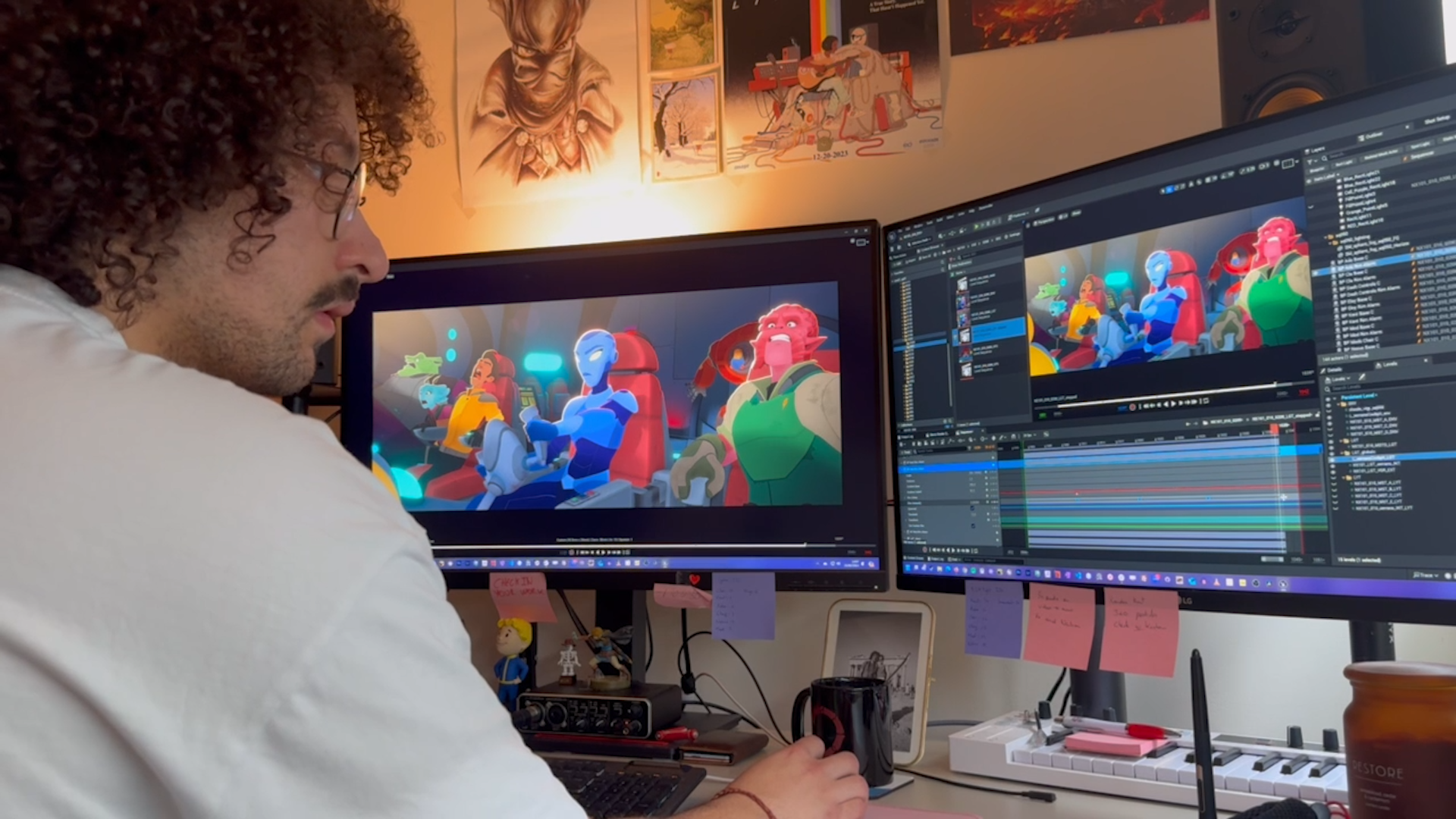The Steaks Are High with Shot-Building
In this final installment, we're diving deep into the heart of Spice Frontier Episode 1's real-time shot building process. Get ready for an exclusive look behind the curtain as we explore the groundbreaking techniques and innovative solutions that bring our vision to life.
First up, we have Christian Johnson shedding light on the essence of shot-building – assembling all the essential ingredients that make up our final shots, from characters to animation to environments. Christian's insights set the stage for understanding the intricate dance of elements in each frame.
Frederic Fitzpatrick then takes us on a journey into the realm of Unreal Engine. He reveals how we've revolutionized our workflow, aiming to deliver the most polished images at the earliest stages of production. With Unreal, we're not just creating – we're sculpting our vision in real time. This allows for decisions and feedback from the creative heads to get involved earlier as things are built.
Antonino Scodrani chimes in with the advantages of shot building within Unreal, highlighting the seamless collaboration between artists and directors. Antonino's perspective offers a glimpse into the efficiency and flexibility that Unreal brings to the table, allowing us to address feedback, iterate on the fly, and save time.
But our journey doesn't end there. David Alve unveils the intricate layers of our shot building process, from scene contexts to master contexts. A master context is a subset of shots within a scene that have similarities, such as a similar environment. After the big overarching problems are addressed, our team can start working on shots individually. David's expertise illuminates the strategic approach we take to tackle complex challenges while maintaining efficiency and quality.
As we navigate the stylistic challenges of Spice Frontier, Christian Johnson returns to the spotlight, sharing the team's quest to preserve the show's distinctive 2D aesthetic within Unreal. The Spice Frontier short film from 2020 had a unique visual style that the team didn't want to compromise, so they have worked to create new toolsets and workflows for Unreal that would allow the flat graphic 2D look. Frederic mentions that though there is training and upskilling involved, the new methodologies and approaches have opened up the possibilities.
And let's not forget Dae Yeon Cho, whose role as an Unreal artist is pivotal in bridging the gap between concept and execution. Dae Yeon's multifaceted contributions ensure that every shot is meticulously crafted to perfection, bringing our vision to life in stunning detail.
As we reflect on the challenges and triumphs of our journey, David Alve returns to share his vision for the future. David's enthusiasm for pushing the boundaries of real-time production hints at the exciting innovations that lie ahead, promising even more breathtaking adventures on the horizon.
As we bid farewell to this chapter of our production diary series, we extend our heartfelt gratitude to each member of the Steamroller Animation team. From the artists to the technicians, your dedication and talent have brought Spice Frontier to life in ways we never thought possible.
Together, we're forging a new frontier in animated storytelling, fueled by creativity, innovation, and a shared passion for excellence. And as we prepare to unveil Spice Frontier Episode 1 to the world, we invite you to join us on this extraordinary journey into the unknown. The adventure awaits!






